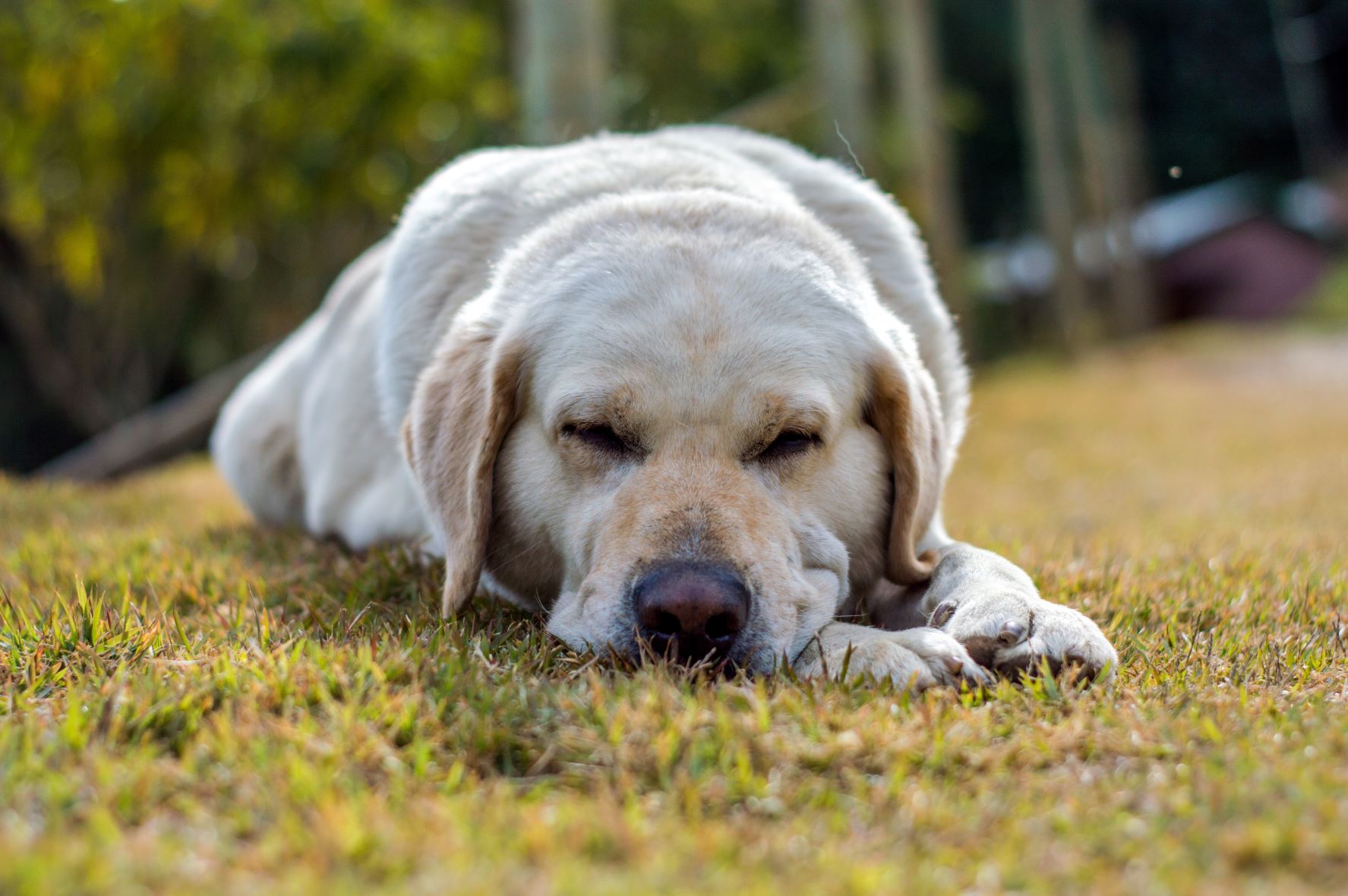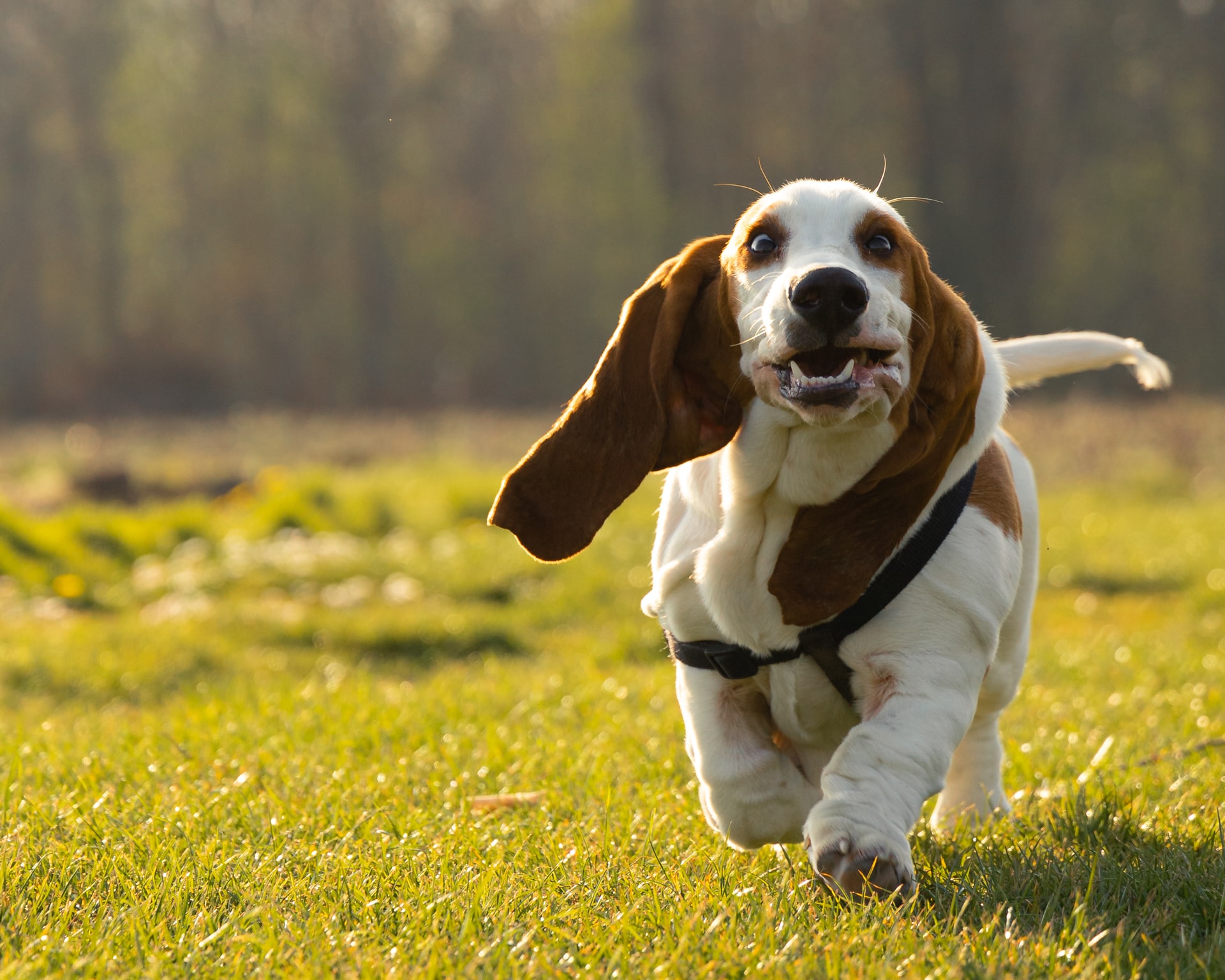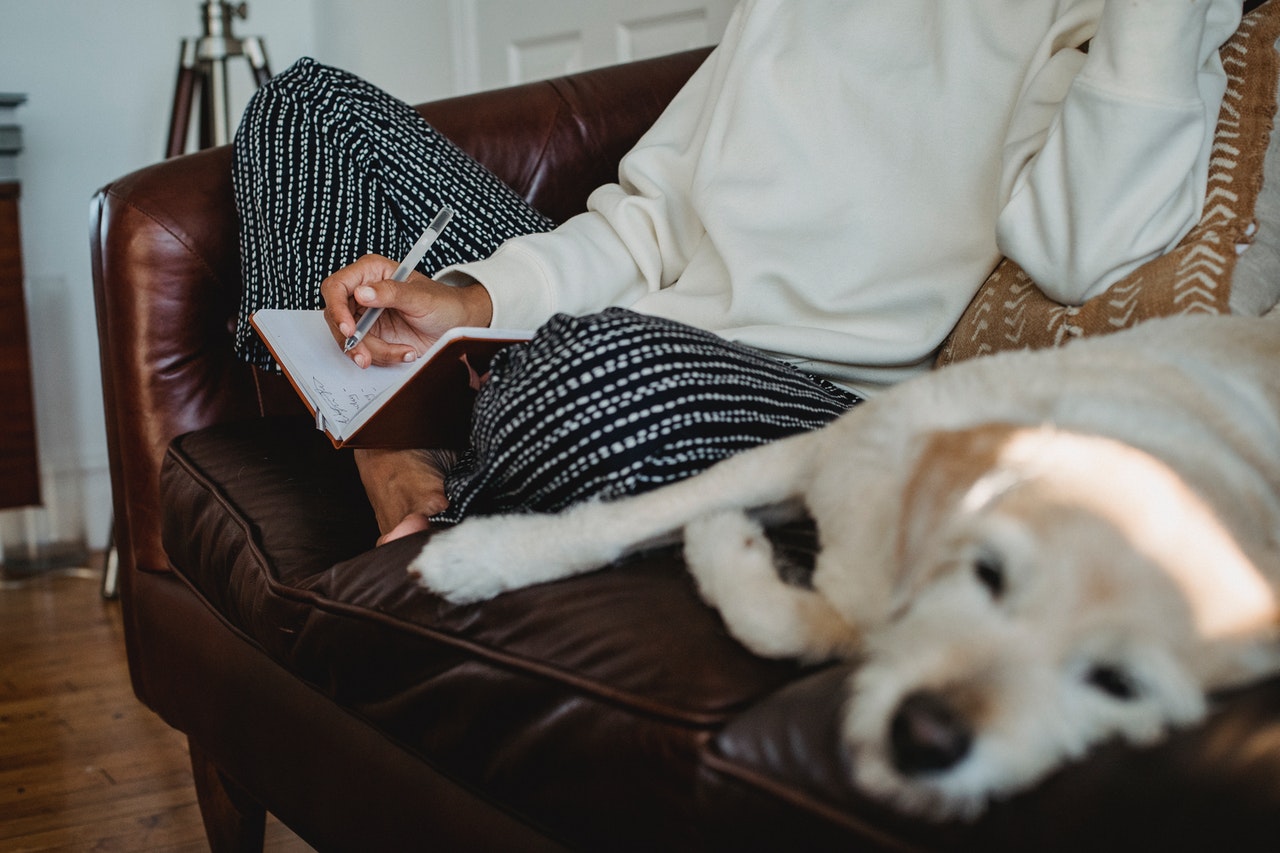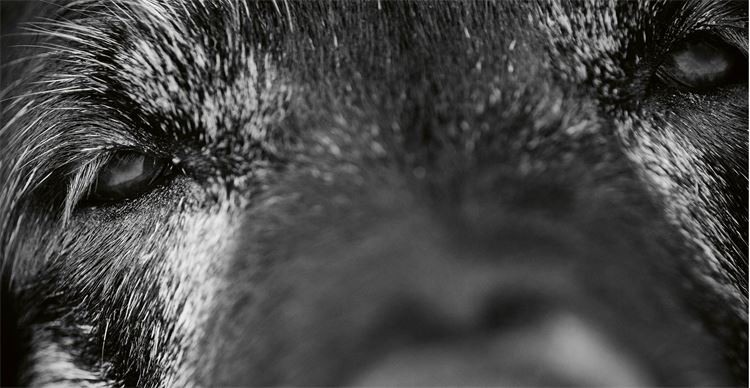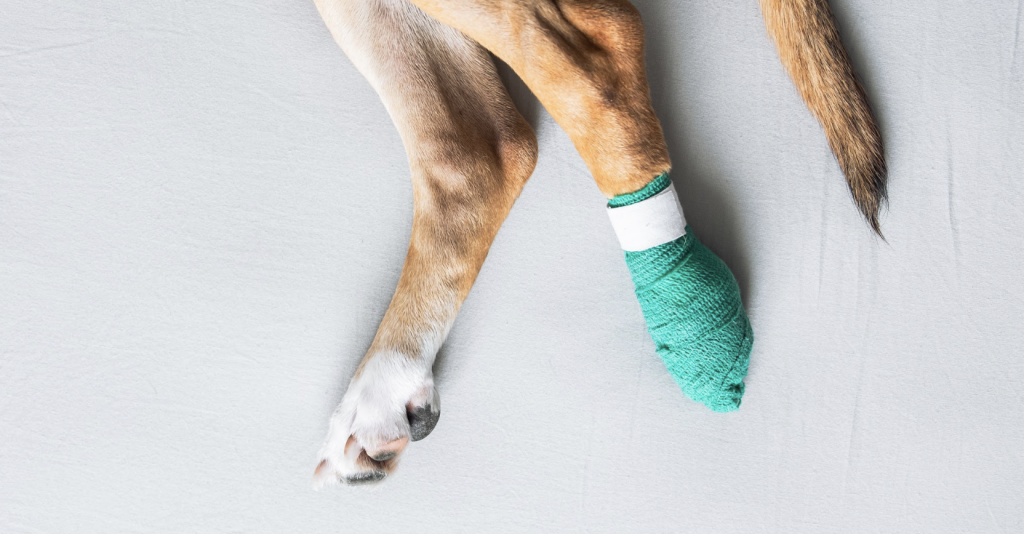Putting A Dog Down: What You Need To Know
Making the decision to put your dog to sleep is the most traumatic decision dog owners face. Veterinary surgeon Laura Keyser has some words of wisdom about the kindest options when it comes to putting a dog down.

When Is The Right Time To Put Your Dog To Sleep?
When is the right time to say goodbye to your beloved working dog, companion, and family pet? As an owner of three spaniels that fit into all of those categories, I can honestly say that the answer is never. And as a vet, I’m frequently faced with owners asking me for advice on when is the right time to put your dog to sleep.
This really is an impossible question to answer, but I have to give my best and most honest advice at the time. In almost all cases, the person in the best situation to answer this most difficult of questions is the dog owner. They just need to step away and try and get some perspective on the situation.
Sadly, there have been times in my career when I have been presented with dogs that are clearly at the end of their lives. This is a very delicate area and it’s hard to write about it, but there have been those that are unable to even raise their head off the blanket they are carried in on and are emaciated due to underlying illnesses.
Too many times I’ve heard, “I thought they would just go in their sleep”, but the harsh reality is that this rarely happens. I know it’s hard to let go, but it is sometimes kinder to put your dog to sleep than to prolong the pain and suffering.
In my job, I feel privileged that we are able to perform dog euthanasia in a humane and dignified way. I have to say, as a human, I would rather end my life like that, and I feel we sometimes treat our pets with more dignity than our fellow human beings.
I want to try to help you make that decision when the time presents itself to put your dog to sleep. Whether your dog is young or old, suffering with cancer or other untreatable disease, or severely injured, the decision to opt for dog euthanasia is always heartbreaking.
What Does Quality Of Life Look Like For Dogs?
In a phone conversation or consultation with an owner about dog euthanasia, I would question you as to whether your dog still a good quality of life – but what exactly should that look like?
At veterinary school, we were taught the five freedoms and how to ensure animals enjoy these seemingly simple requirements.
1. Freedom from hunger and thirst. By providing enough fresh water and the right type and amount of food to keep them fit
2. Freedom from discomfort. By making sure they have the right type of environment, including shelter and somewhere comfortable to rest
3. Freedom from pain, injury and disease. By preventing them from getting ill or injured and by making sure they are diagnosed and treated rapidly if they do
4. Freedom to express normal behaviour. By making sure they have enough space, proper facilities and the company of other animals of their own kind
5. Freedom from fear and distress. By making sure their conditions and treatment avoid mental suffering
Although these five freedoms pertain mainly to farm animals, those in captivity, or cruelty cases, I think this is a useful and universally applicable framework for our working and pet dogs. You can probably add a few more criteria to your list of what constitutes quality of life for your dog, but these are the bare minimums.
When Is The Right Time To Put Your Dog To Sleep?
If you ask my advice about putting your dog to sleep, I will give my honest opinion, but I will also flip the conversation around and ask you some questions, such as:
- Are they pain free?
- Are they pleased to see you in the morning?
- Do they still greet you with a wagging tail when you come home?
- Can they get up and go out for a walk?
- Are they still happy?
- Is your dog still eating?
If your answer to any or several of the questions is no, then I really think you need to be considering putting your dog to sleep. Yes, we can keep them pain-free with anti-inflammatories and other painkillers, but when that dog stops wanting to go out for a walk or they have to be lifted into the garden, then I think you have to question whether it is fair to keep them going. And yes, they may have stopped eating for another reason, but if the answer is no to any of the other questions, then there is clearly a significant issue.
I would rather know that my dog had had a long, happy life and was given a peaceful, dignified farewell, than be left to suffer on in silence.
With two geriatric spaniels now, we will sadly be in this situation soon ourselves. Our eldest springer has so many orthopaedic problems affecting all four limbs that even the best surgeon in the world couldn’t fix her now. We didn’t think we would have her this long (she’s 12), but we have been fortunate that with adequate analgesia (pain relief), she still enjoys her daily walks, wags her tail and eats well. As soon as she’s no longer able to do that, we will accept that putting her to sleep is the kindest option and, although it will be devastating, it will only be fair to her and she deserves that – she has been the best first dog.
Why Putting Your Dog To Sleep Can Be The Last Act Of Care For Your Pet
You and your family know your dog better than anyone else, so please try to make a reasoned judgement on their quality of life when you’re thinking about whether to put your dog to sleep.
As vets, we can try to help with the decision on putting your dog to sleep, and we can make a recommendation as to whether we think it’s appropriate there and then, or in the not too distant future.
You may think that vets that don’t get upset while carrying out dog euthanasia and may seem cold or uncaring, but trust me every single PTS (put to sleep) affects us. Over the years, we’ve learnt to be blinkered so we can act in a calm and professional way to help you through a difficult situation.
Should You Stay In The Room When The Vet Is Putting Your Dog To Sleep?
For those of you that haven’t had to go through putting your dog to sleep before, I will try to explain in detail what will happen on the day. Once you’ve made the decision to opt for dog euthanasia, give your vet a call to talk through the options. Most vets offer home visits, or you can take your dog into the practice, and either stay with them or not. You will be asked to sign a consent form, which may seem formal, but it’s an understandable requirement. The vet will also talk through the options about what will happen after they’ve put your dog to sleep.
Should you stay while the vet is putting your dog to sleep? This is a very personal decision and it is entirely your choice. Many people feel they want to be with their dog at the end, but you should not feel guilty if you cannot stay. You can say your goodbyes and then leave them in the capable hands of the vets and nurses.
You may wish to see your dog afterwards instead and have the opportunity to spend some time alone with them. At this point, some owners choose to bring their other dog(s) in to see them and have a smell of the body before leaving. Some people believe this helps the other dog to understand where their companion has gone.
What Happens During Dog Euthanasia?
The act of putting a dog down is performed by giving an injection of a drug called pentobarbitone, which essentially provides an overdose of anaesthetic. Dog euthanasia is usually carried out by injecting the pentobarbitone into the vein in a front leg.
The dog euthanasia procedure may vary slightly from vet to vet, so I can’t speak for all. Some will inject ‘off the needle’, which means that the needle attached to the syringe is placed directly into the vein. Others will prefer to place an intravenous catheter (cannula) in the vein of the leg and secure this with a bandage. Dog euthanasia may be carried out in front of you or in a different room, with the assistance of a veterinary nurse. This is to guarantee venous access should the dog move at the time of the injection. This is a personal decision of that particular vet and is often based on the temperament of the dog.
If a dog becomes agitated or restless, or has behavioural problems, the vet may prefer to give a sedative first so the dog is sleepy before the final injection is given. The downside of this is that accessing a vein can be more difficult, as the sedatives cause the blood pressure to drop, and the injection may work more slowly while it takes longer to get around the circulation.
Will The Dog Euthanasia Procedure Hurt My Dog?
During the euthanasia procedure, your dog may feel a small prick as a catheter is placed first; if using a needle directly, then the injection itself is painless. They will feel like they’re going to sleep as if they were having an anaesthetic. Unconsciousness only takes a matter of seconds and shortly afterwards the heart will stop beating. This will be confirmed by the vet listening to the chest with a stethoscope. It may take a little longer if the dog is extremely ill or has poor circulation.
With the best will in the world, we want this to happen as smoothly as possible and with no distress to the animal, but there are occasionally instances where it could be trickier to find a vein, or it may take a little longer than usual. Often the dog will empty their bladder or bowels afterwards, so it is worth being prepared for this with a towel. Sometimes they can have reflex gasps or body twitches, this does not mean the injection hasn’t worked, they are involuntary reflexes denoting death has occurred.
What Happens After You Put Your Dog To Sleep?
After the vet has put your dog to sleep, you’ll have the option to take your dog home to bury them, if you have somewhere suitable, or to take them to a local pet crematorium yourself for cremation the same day. Alternatively, and most often, the vets will arrange cremation for you.
Dog cremation can either be routine – which means it will take place with other animals and you would not get any ashes back – or individual and you would definitely get your own pet’s ashes returned. You then have the option of a scatter tube, which can be opened to scatter them on your favourite walk, or a sealed casket or urn with a name plaque for safekeeping.
Vets and pet crematoriums often offer a paw print option as well to have an imprint taken, or you could ask to keep a lock of hair. You will then be contacted by your vet practice when the ashes are ready to collect, which can take a week to 10 days.
Putting a dog down is an incredibly sad time for everyone involved, but it is the last kind gesture you can do for your hardworking, loving dog.
If you’d like to share your thoughts on the topic of putting a dog down, please email will.hetherington@fieldsportspress.com. If you have any questions about making the decision to put your dog to sleep, please contact us here.
Related Articles
Get the latest news delivered direct to your door
Subscribe to Gundog Journal
Unlock the full potential of your working dog with a subscription to Gundog Journal, the UK’s only dedicated magazine for gundog enthusiasts. Published bi-monthly, this authoritative resource delivers expert training advice, in-depth interviews with top trainers and veterinary guidance to help you nurture a stronger bond with your dog.
With stunning photography and thought-provoking content, Gundog Journal is your essential guide to understanding, training and celebrating your working dog.
Save 10% on shop price when you subscribe, with a choice of packages that work for you. Choose from Print & Digital or Digital only with each journal delivered directly to your door or via the app every other month, plus access to past issues with the digital back issue library.






